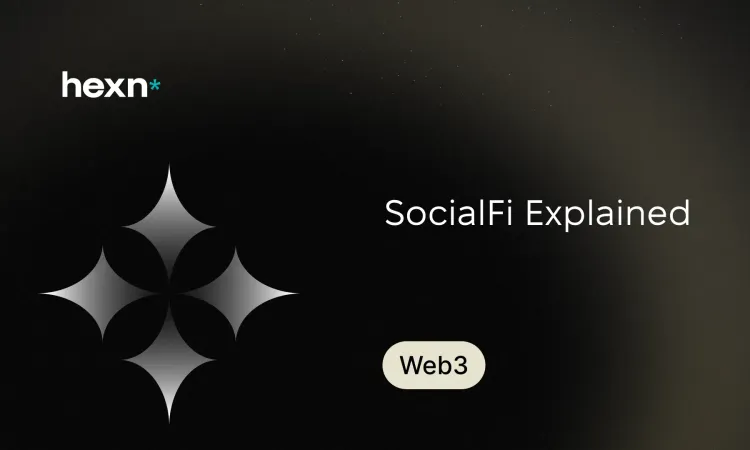SocialFi Explained
SocialFi merges social networking with decentralized finance to give creators and communities more control over data, monetization, and governance. It promises new revenue models, token-based incentives, and community-led rules that could reshape how we interact online.
Quick Summary
- SocialFi puts financial primitives into social platforms so interactions and attention can be monetized directly.
- Key building blocks include tokenized social value, blockchain-based content ownership (often via NFTs), and governance through DAOs.
- Widespread use depends on solving technical limits like scalability and creating durable economic models.
How Web3 Principles Change Social Platforms
Web3 shifts control from centralized companies back to individual users. In a Web3 social layer, people can own their profiles, control who accesses their content, and transact without intermediaries. That philosophical change is the foundation for SocialFi: instead of platforms capturing most of the value, creators and communities can capture and trade a share of it directly.
What SocialFi Means in Practice
At its simplest, SocialFi is social media with financial incentives baked in. Rather than ad-driven monopolies, these platforms let participants earn tokens, sell exclusive content as NFTs, or receive micro-payments for engagement. The idea is similar to modern membership services, but decentralized: creators can grant perks, gate content, or sell stakes in their social presence without relying on a central company to mediate.
SocialFi vs Decentralized Social Networks
Decentralized social networks (DeSoc) focus on moving hosting and moderation away from single providers, prioritizing censorship resistance and data portability. SocialFi adds a commercial layer: the explicit goal is to turn social capital into tradable, tokenized value. In short, DeSoc emphasizes ownership and control; SocialFi emphasizes monetization and economic incentives.
Why SocialFi Matter to Creators and Communities
Traditional platforms often control distribution, data, and monetization rules. SocialFi aims to rebalance that: creators can own content, set pricing, and let communities influence product direction through token-weighted votes. This can transform intangible audience engagement into measurable, tradable value—turning followers into stakeholders and attention into income.
Beyond direct payments, SocialFi also promises more transparent moderation and governance. When rules are encoded or overseen by a DAO, decisions become collective rather than the product of a single company’s policy choices.
Examples of Emerging SocialFi Projects
Several early projects show different paths for SocialFi. One platform sells access tokens that function like shares: buying a token can unlock private chats and special content from creators. Another project adapts that model on an alternative blockchain, letting users link off-chain social profiles and trade access or creator tokens. These experiments highlight how creators can monetize relationships, though they remain early-stage and carry technical and economic risks.
Key Advantages of SocialFi Platforms
- Data and content ownership: Storing references or ownership on-chain helps users retain rights to what they publish.
- Direct rewards: Creators and active participants can earn tokens for content, curation, or engagement instead of relying only on ad revenue.
- Incentivized quality: Token rewards encourage content that generates real engagement rather than surface metrics.
- Protection from unilateral deplatforming: Community governance and decentralized hosting reduce the risk of sudden take-downs by a single operator.
- More transparent moderation: Decentralized or on-chain governance can make rule-setting and enforcement more auditable.
Main Obstacles to Widespread SocialFi Adoption
Despite its promise, SocialFi faces meaningful hurdles before it can match mainstream platforms in scale and stability.
Scalability: Handling Social-Scale Data
Modern social networks process enormous volumes of posts, images, and interactions every day. Replicating that performance on decentralized infrastructure is expensive and technically complex. Developers are exploring approaches like sharding, hybrid on-chain/off-chain storage, and layer-2 solutions to keep costs and latency manageable while preserving user control.
Sustainability: Building Durable Token Economies
Early SocialFi platforms often relied on generous token incentives to attract users. Those models can be unsustainable if token supply and demand aren’t balanced long term. Social tokens are also sensitive to reputation risk: a creator’s token value can fluctuate dramatically based on behavior or public perception, which can create feedback loops and market volatility.
Looking Ahead
SocialFi is still experimental, but it points toward social platforms where creators and communities share value more directly. If technical scaling improves and token models prove durable, we could see a shift away from ad-first platforms toward networks that reward participation, ownership, and curation. However, adoption will depend on user experience, regulatory clarity, and whether creators find reliable ways to convert attention into lasting value.
For anyone watching the intersection of social media and crypto, SocialFi is worth following: it combines new economic tools with community-driven governance, and it could change how online influence is measured and monetized.
